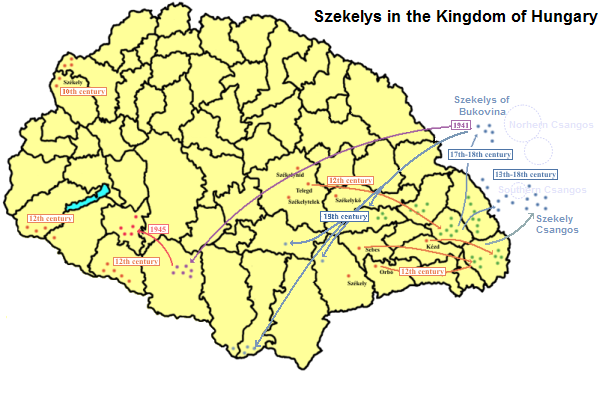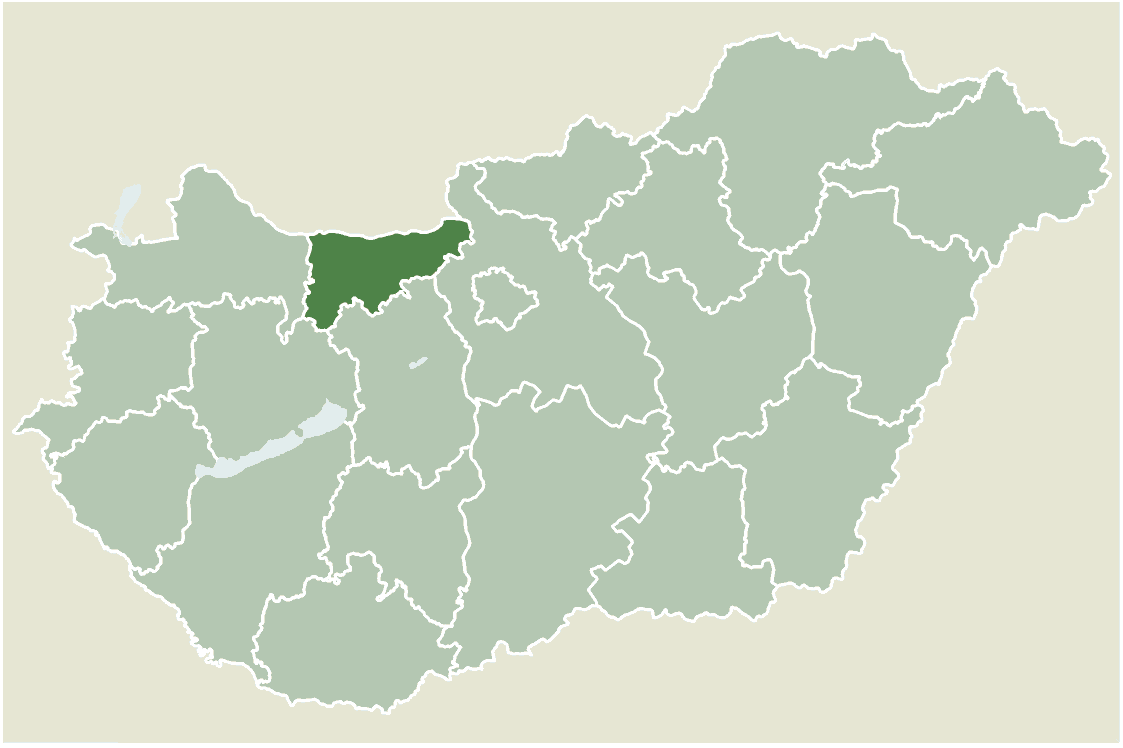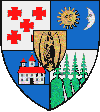|
Kibéd
Chibed ( hu, Kibéd, Hungarian pronunciation: ) is a commune in Mureș County, Transylvania, Romania, composed of a single village, Chibed. It lies in the Székely Land, an ethno-cultural region in eastern Transylvania. The village is famous for the onion produced in the village and sold in front of the houses along the main road. History The village was historically part of the Székely Land in Transylvania and belonged to Marosszék in the Middle Ages. In the mid-1780s as part of the Josephine administrative reform, Marosszék was integrated into Küküllő county, however, the szék-system was restored in 1790. After the suppression of the Hungarian Revolution in 1849, the village formed part of the Kibéd military sub-division of the Marosvásárhely division in the Udvarhely military district. Between 1861 and 1876, the former Marosszék was restored. As a result of the administrative reform in 1876, the village fell within Maros-Torda County in the Kingdom of Hungary. Afte ... [...More Info...] [...Related Items...] OR: [Wikipedia] [Google] [Baidu] |
List Of Hungarian Exonyms (Mureș County)
This is a list of Hungarian names for towns and communes in Mureș County, Transylvania, Romania. {{DEFAULTSORT:List of Hungarian exonyms (Mures County) Mures County Hungarian exonyms in Mures Hungarian Hungarian Exonyms An endonym (from Greek language, Greek: , 'inner' + , 'name'; also known as autonym) is a common, ''native'' name for a Location, geographical place, group of people, individual person, language or dialect, meaning that it is used inside that p ... Hungarian ... [...More Info...] [...Related Items...] OR: [Wikipedia] [Google] [Baidu] |
Communes Of Romania
A commune (''comună'' in Romanian) is the lowest level of administrative subdivision in Romania. There are 2,686 communes in Romania. The commune is the rural subdivision of a county. Urban areas, such as towns and cities within a county, are given the status of ''city'' or '' municipality''. In principle, a commune can contain any size population, but in practice, when a commune becomes relatively urbanised and exceeds approximately 10,000 residents, it is usually granted city status. Although cities are on the same administrative level as communes, their local governments are structured in a way that gives them more power. Some urban or semi-urban areas of fewer than 10,000 inhabitants have also been given city status. Each commune is administered by a mayor (''primar'' in Romanian). A commune is made up of one or more villages which do not themselves have an administrative function. Communes, like cities, correspond to the European Union's level 2 local administrativ ... [...More Info...] [...Related Items...] OR: [Wikipedia] [Google] [Baidu] |
Székelys
The Székelys (, Székely runes: 𐳥𐳋𐳓𐳉𐳗), also referred to as Szeklers,; ro, secui; german: Szekler; la, Siculi; sr, Секељи, Sekelji; sk, Sikuli are a Hungarian subgroup living mostly in the Székely Land in Romania. A significant population descending from the Székelys of Bukovina lives in Tolna and Baranya counties in Hungary and certain districts of Vojvodina, Serbia. In the Middle Ages, the Székelys played a role in the defense of the Kingdom of Hungary against the Ottomans in their posture as guards of the eastern border. With the Treaty of Trianon of 1920, Transylvania (including the Székely Land) became part of Romania, and the Székely population was a target of Romanianization efforts. In 1952, during the communist rule of Romania, the former counties with the highest concentration of Székely population – Mureș, Odorhei, Ciuc, and Trei Scaune – were legally designated as the Magyar Autonomous Region. It was superseded in ... [...More Info...] [...Related Items...] OR: [Wikipedia] [Google] [Baidu] |
Communes In Mureș County
An intentional community is a voluntary residential community which is designed to have a high degree of social cohesion and teamwork from the start. The members of an intentional community typically hold a common social, political, religious, or spiritual vision, and typically share responsibilities and property. This way of life is sometimes characterized as an "alternative lifestyle". Intentional communities can be seen as social experiments or communal experiments. The multitude of intentional communities includes collective households, cohousing communities, coliving, ecovillages, monasteries, survivalist retreats, kibbutzim, hutterites, ashrams, and housing cooperatives. History Ashrams are likely the earliest intentional communities founded around 1500 BCE, while Buddhist monasteries appeared around 500 BCE. Pythagoras founded an intellectual vegetarian commune in about 525 BCE in southern Italy. Hundreds of modern intentional communities were formed across Europe ... [...More Info...] [...Related Items...] OR: [Wikipedia] [Google] [Baidu] |
Târnava Mică
The Târnava Mică ("Small Târnava"; hu, Kis-Küküllő; german: Kleine Kokel) is a river in Romania. Its total length is , and its drainage basin area is . Its source is in the Eastern Carpathian Mountains, in Harghita County. It flows to the west through the Romanian counties Harghita, Mureș, and Alba, more or less parallel to and north from the Târnava Mare. The cities of Sovata and Târnăveni lie on the Târnava Mică. It joins the Târnava Mare in Blaj, forming the Târnava. e-calauza.ro Towns and villages The following towns and villages are situated along the river Târnava Mică, from source to mouth: Praid, |
Reformed Church Of Romania
The Reformed Church in Romania ( hu, Romániai Református Egyház; ro, Biserica Reformată din România) is the organization of the Calvinist church in Romania. The majority of its followers are of Hungarian ethnicity and Hungarian is the main church language. The large majority of the Church's parishes are in Transylvania; according to the 2002 census, 701,077 people or 3.15% of the total population belong to the Reformed Church. About 95% of the members were of Hungarian ethnicity. The religious institution is composed of two bishoprics, the Reformed Diocese of Királyhágómellék and the Reformed Diocese of Transylvania. The headquarters are at Oradea and Cluj-Napoca, respectively. Together with the Unitarian Church of Transylvania and the two Lutheran churches of Romania (the Evangelical Lutheran Church in Romania and the Evangelical Church of Augustan Confession), the Calvinist community runs the Protestant Theological Institute of Cluj. Doctrine The church a ... [...More Info...] [...Related Items...] OR: [Wikipedia] [Google] [Baidu] |
Zalalövő
Zalalövő ( la, Sala) is a town in Zala County, Hungary. Twin towns — sister cities Zalalövő is twinned with: * Oberaich, Austria * Chibed, Romania * Savignano sul Panaro Savignano sul Panaro ( Modenese: ; Western Bolognese: ) is a ''comune'' (municipality) in the Province of Modena in the Italian region Emilia-Romagna, located about west of Bologna and about southeast of Modena Modena (, , ; egl, label= ..., Italy References External links Street map Populated places in Zala County {{Zala-geo-stub ... [...More Info...] [...Related Items...] OR: [Wikipedia] [Google] [Baidu] |
Szatymaz
Szatymaz is a village in Csongrád county, in the Southern Great Plain region of southern Hungary. The village lies 12 kilometers northwest of Szeged, neighboring Lake Fehér, a part of Kiskunság National Park. Szatymaz is accessible via the M5-Motorway, and by rail via Szeged-Budapest train lines, including the Intercity trains which pass through the village. History The area around Szatymaz has been inhabited since the early Bronze Age (2500–1700 B.C.). Archaeological remains of settlements dating from the time of the Pannonian Avars, and the early Kingdom of Hungary have been found in Szatymaz and its surroundings. The name "Szatymaz" likely derives from an old Cuman family name. Szatymaz was first mentioned in writing as a location on a 1676 Hapsburg map, which identified it as a postal stop between Szeged and Kistelek. During the first half of the 18th century, inhabitants of Szeged bought land, and built small buildings around the postal stop to be used for agricu ... [...More Info...] [...Related Items...] OR: [Wikipedia] [Google] [Baidu] |
Hungary
Hungary ( hu, Magyarország ) is a landlocked country in Central Europe. Spanning of the Carpathian Basin, it is bordered by Slovakia to the north, Ukraine to the northeast, Romania to the east and southeast, Serbia to the south, Croatia and Slovenia to the southwest, and Austria to the west. Hungary has a population of nearly 9 million, mostly ethnic Hungarians and a significant Romani minority. Hungarian, the official language, is the world's most widely spoken Uralic language and among the few non- Indo-European languages widely spoken in Europe. Budapest is the country's capital and largest city; other major urban areas include Debrecen, Szeged, Miskolc, Pécs, and Győr. The territory of present-day Hungary has for centuries been a crossroads for various peoples, including Celts, Romans, Germanic tribes, Huns, West Slavs and the Avars. The foundation of the Hungarian state was established in the late 9th century AD with the conquest of the Carpat ... [...More Info...] [...Related Items...] OR: [Wikipedia] [Google] [Baidu] |
Bakonyszombathely
Bakonyszombathely (german: Deutschmarkt) is a village in Komárom-Esztergom county, Hungary Hungary ( hu, Magyarország ) is a landlocked country in Central Europe. Spanning of the Carpathian Basin, it is bordered by Slovakia to the north, Ukraine to the northeast, Romania to the east and southeast, Serbia to the south, Croa .... External links Street map (Hungarian) Populated places in Komárom-Esztergom County {{Komarom-geo-stub ... [...More Info...] [...Related Items...] OR: [Wikipedia] [Google] [Baidu] |
Roma People Of Romania
Romani people (Roma; Romi, traditionally '' Țigani'', (often called "Gypsies" though this term is considered a slur) constitute one of Romania's largest minorities. According to the 2011 census, their number was 621.573 people or 3.3% of the total population, being the second-largest ethnic minority in Romania after Hungarians. There are different estimates about the size of the total population of people with Romani ancestry in Romania, varying from 4.6 per cent to over 10 percent of the population, because many people of Romani descent do not declare themselves Romani. For example, the Council of Europe estimates that approximately 1.85 million Roma live in Romania, a figure equivalent to 8.32% of the population. Origins The Romani people originate from northern India, presumably from the northwestern Indian regions such as Rajasthan and Punjab. The linguistic evidence has indisputably shown that roots of Romani language lie in India: the language has grammatical character ... [...More Info...] [...Related Items...] OR: [Wikipedia] [Google] [Baidu] |
Hungarians In Romania
The Hungarian minority of Romania ( hu, Romániai magyarok; ro, maghiarii din România) is the largest ethnic minority in Romania, consisting of 1,227,623 people and making up 6.1% of the total population, according to the 2011 Romanian census, the second last recorded in the country's history. Most ethnic Hungarians of Romania live in areas that were, before the 1920 Treaty of Trianon, parts of Hungary. Encompassed in a region known as Transylvania, the most prominent of these areas is known generally as Székely Land ( ro, Ținutul Secuiesc, links=no; hu, Székelyföld, links=no), where Hungarians comprise the majority of the population. Transylvania also includes the historic regions of Banat, Crișana and Maramureș. There are forty-one counties of Romania; Hungarians form a large majority of the population in the counties of Harghita (85.21%) and Covasna (73.74%), and a large percentage in Mureș (38.09%), Satu Mare (34.65%), Bihor (25.27%), Sălaj (23.35%), an ... [...More Info...] [...Related Items...] OR: [Wikipedia] [Google] [Baidu] |


.png)




